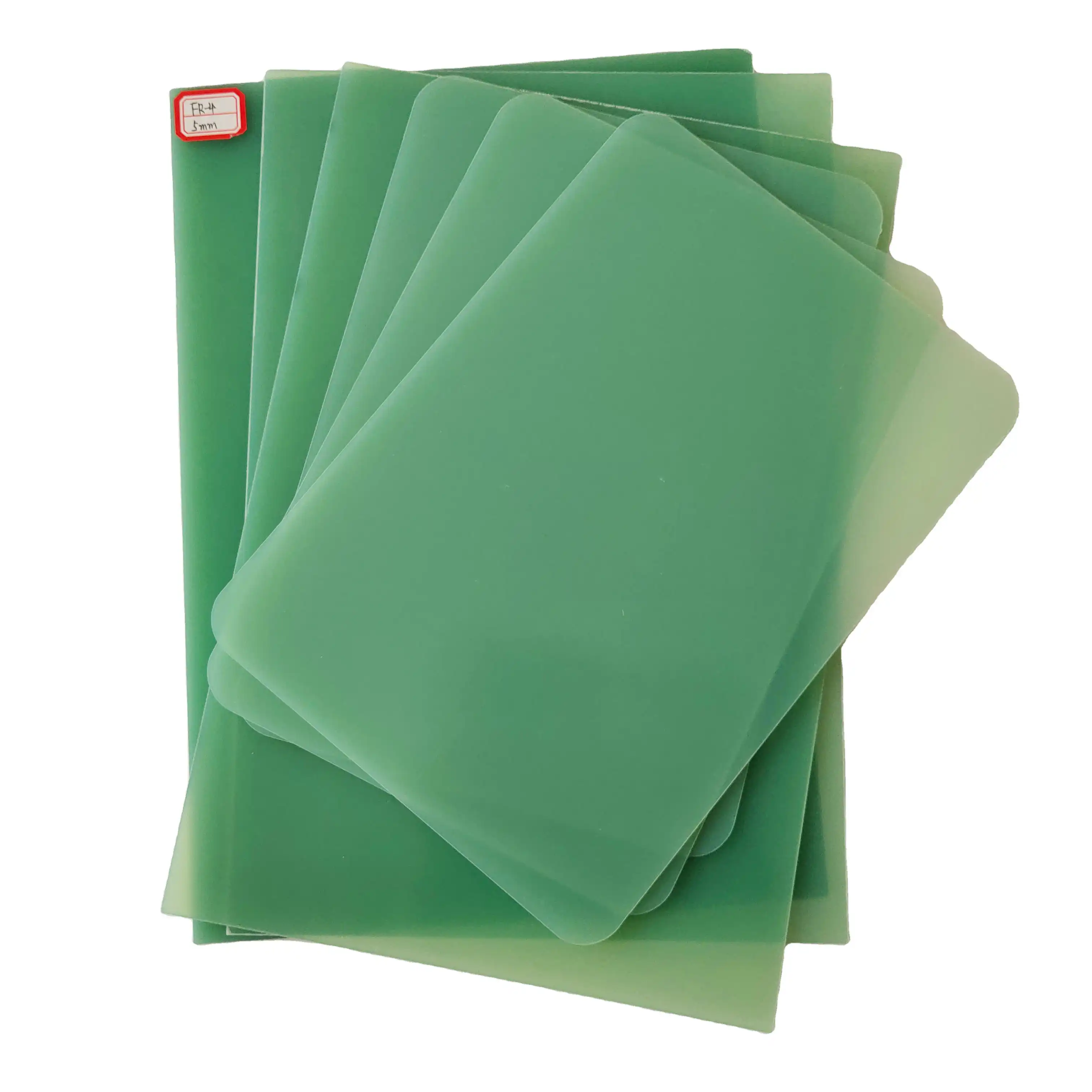What Thickness and Grade of FR4 Should You Choose?
Evaluating Electrical Requirements
When selecting FR4 epoxy sheets for your PCB project, evaluating electrical requirements is paramount. Consider the dielectric constant and loss tangent needed for your specific application. High-frequency designs may necessitate FR4 grades with lower dielectric constants to minimize signal loss. Additionally, assess the voltage ratings and breakdown strength required to ensure proper insulation between layers and components.
Assessing Mechanical Needs
The mechanical properties of FR4 sheets play a crucial role in PCB durability. Evaluate the flexural strength needed to withstand bending stresses during assembly and use. Consider the dimensional stability requirements, especially for multilayer boards where layer registration is critical. For applications involving thermal cycling or vibration, choose FR4 grades with enhanced mechanical resilience to prevent delamination or cracking.
Thermal Considerations
Thermal management is a key factor in FR4 selection. Assess the maximum operating temperature your PCB will encounter and choose an FR4 grade with an appropriate glass transition temperature (Tg). For high-power applications or those exposed to extreme environments, opt for high-Tg FR4 variants that maintain stability at elevated temperatures. Consider the coefficient of thermal expansion (CTE) to ensure compatibility with other PCB materials and components.
Lamination, Drilling, and Depaneling Process Guidelines
Optimizing Lamination Parameters
Successful lamination of FR4 epoxy sheets is crucial for PCB integrity. Calibrate lamination press parameters including temperature, pressure, and dwell time according to the specific FR4 grade and thickness. Ensure even heat distribution across the lamination stack to prevent warpage or incomplete bonding. Implement proper layup techniques, incorporating separation sheets and press pads to achieve uniform pressure distribution and optimal surface finish.
Precision Drilling Techniques
Accurate drilling of FR4 sheets is essential for creating reliable through-holes and vias. Utilize high-speed spindles and specialized drill bits designed for FR4 material to minimize burr formation and ensure clean hole walls. Implement peck drilling strategies for deeper holes to facilitate chip evacuation and prevent drill bit breakage. Optimize feed rates and spindle speeds based on hole diameter and FR4 thickness to achieve optimal hole quality and positional accuracy.
Efficient Depaneling Methods
Choose appropriate depaneling methods based on your PCB design and production volume. For prototype or low-volume runs, consider manual routing or scored FR4 sheets that allow for easy board separation. In high-volume production, employ automated depaneling systems such as CNC routers or laser cutting machines. Adjust cutting parameters to minimize stress on FR4 edges and prevent delamination. Implement proper support and waste material removal techniques to ensure clean board edges and maintain dimensional accuracy.
In-Line Quality Control Before Assembly and Soldering
Visual Inspection Protocols
Implement rigorous visual inspection protocols to detect surface defects on FR4 epoxy sheets before assembly. Train operators to identify issues such as scratches, dents, or foreign material inclusions that could compromise PCB performance. Utilize magnification tools and proper lighting to examine copper layer adhesion, drill hole quality, and edge conditions. Develop standardized criteria for accepting or rejecting boards based on visual inspection results to maintain consistent quality standards.
Electrical Testing Procedures
Conduct comprehensive electrical testing on bare FR4 boards to verify circuit integrity and insulation properties. Employ flying probe or bed-of-nails testers to perform continuity and isolation tests on all PCB nets. Measure dielectric strength between layers to ensure proper insulation. For high-reliability applications, consider implementing time domain reflectometry (TDR) testing to detect impedance discontinuities or hidden defects within the FR4 substrate.
Dimensional Verification Methods
Verify critical dimensions of FR4 boards to ensure compliance with design specifications. Utilize precision measurement tools such as coordinate measuring machines (CMMs) or optical comparators to check board outline, hole positions, and layer registration. Implement statistical process control (SPC) techniques to monitor dimensional trends and identify potential issues in the manufacturing process. Pay special attention to warpage and twist measurements, particularly for larger or thinner FR4 boards, to prevent assembly problems.
Conclusion
Mastering the use of FR4 epoxy sheets in PCB manufacturing is essential for producing high-quality, reliable circuit boards. By carefully selecting the appropriate thickness and grade, optimizing lamination and drilling processes, and implementing thorough quality control measures, you can harness the full potential of FR4 materials. Remember that each step in the manufacturing process contributes to the final PCB performance, so attention to detail is crucial. As technology advances, staying updated on the latest FR4 innovations and manufacturing techniques will ensure your PCBs meet the evolving demands of modern electronics.
Contact Us
Ready to elevate your PCB manufacturing process with top-quality FR4 epoxy sheets? Contact our team of experts at info@jhd-material.com for personalized guidance and superior products tailored to your specific needs. Let's work together to bring your PCB designs to life with precision and reliability.






